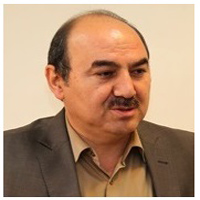Effect of Art Therapy (Painting) on Executive Functions and Visual Motor Coordination in Dyslexic Children
Author(s):
Article Type:
Research/Original Article (دارای رتبه معتبر)
Abstract:
Background & Objective
Due to the complexity of learning disorders and their associated symptoms varoius treatments and methods areused to trat them. Recently, varoius forms of art threapy have caught researchers’ attention. Thus, this study investigated the effect of art therapy (painting) on executive functions and visual-motor coordination in dyslexic students.
Methods
This is a two-group pretest-posttest quasi-experimental research. The population of the study included all dyslexic children enrolloing in treatment centers in Mashhad-Iran in 2015. Conveience sampling was used to recruit 40 dyslexic children as the participants in the study. The participants were assigned to the experimental and control groups randomly in equal numbers. Three participants in the experimental group and three participants in the control group left the treatment before its conclusion. Consequently, the total number of experimental and the control groups each decreased to 17 participants.The inclusion criteria were as follows: meeting diagnostic criteria for dysfunction, being in the age range of 7 to 12, and being computer literate. The exclusion criteria were as follows: having disorders such as ADHD and ODD, taking psychiatric medications, and being treated simultaneously with research. The research instruments were Tower of London, Stroop, and Continuous Operation Test and Bender-Gestalt visual-motor coordination. MANCOVA procedures were used to analyze the data.
Results
Levin's test was run to test the default homogeneity of variance. The results assured the homogeneity of variance in the investigated variables within both groups, allowing for parametric tests to be used. Besides, the result of Wilks Lambda indicated that there was a statistically significant difference, between the experimental and control groups at least one of the variables, so to investigate the difference, ANCOVA was used. The results showed the effect of art therapy (painting) on executive functions in terms of reduced time and increased total points in the Tower of London, committing and removing errors and time in continuous operation test, and reducing the amount of time keeping, time incongruent and inconsistent error in Stroop test (p˂0.05); and visual-motor coordination in terms of distortion, rotation, lack of integration and repetition (p˂0.01).
Conclusion
It can be concluded that art therapy (painting) is an effective way to improve symptoms of dyslexia among children. The intervention was shown to delay the progression of this disorder and the transmission of negative consequences to the next periods.Keywords:
Language:
Persian
Published:
Middle Eastern Journal of Disability Studies, Volume:8 Issue: 1, 2018
Page:
50
magiran.com/p1960838
دانلود و مطالعه متن این مقاله با یکی از روشهای زیر امکان پذیر است:
اشتراک شخصی
با عضویت و پرداخت آنلاین حق اشتراک یکساله به مبلغ 1,390,000ريال میتوانید 70 عنوان مطلب دانلود کنید!
اشتراک سازمانی
به کتابخانه دانشگاه یا محل کار خود پیشنهاد کنید تا اشتراک سازمانی این پایگاه را برای دسترسی نامحدود همه کاربران به متن مطالب تهیه نمایند!
توجه!
- حق عضویت دریافتی صرف حمایت از نشریات عضو و نگهداری، تکمیل و توسعه مگیران میشود.
- پرداخت حق اشتراک و دانلود مقالات اجازه بازنشر آن در سایر رسانههای چاپی و دیجیتال را به کاربر نمیدهد.
In order to view content subscription is required
Personal subscription
Subscribe magiran.com for 70 € euros via PayPal and download 70 articles during a year.
Organization subscription
Please contact us to subscribe your university or library for unlimited access!


